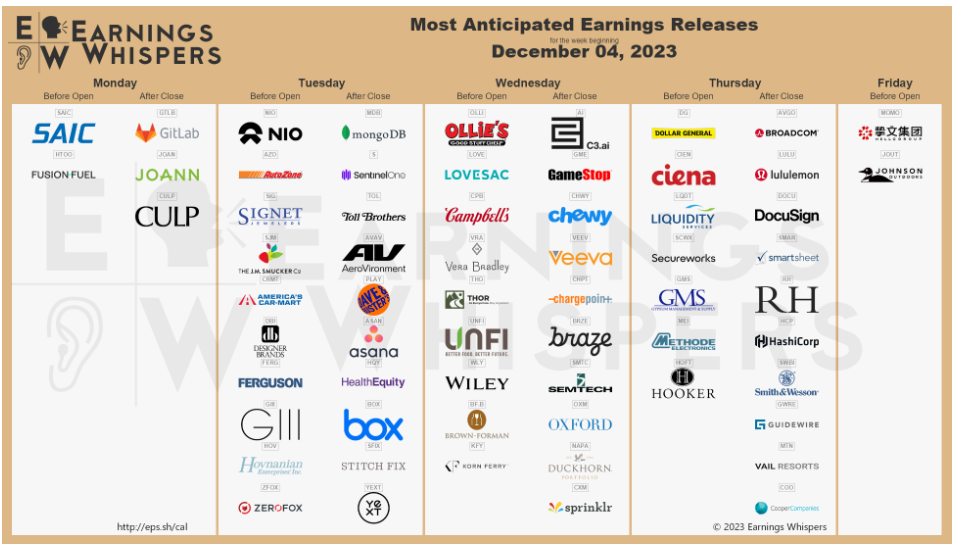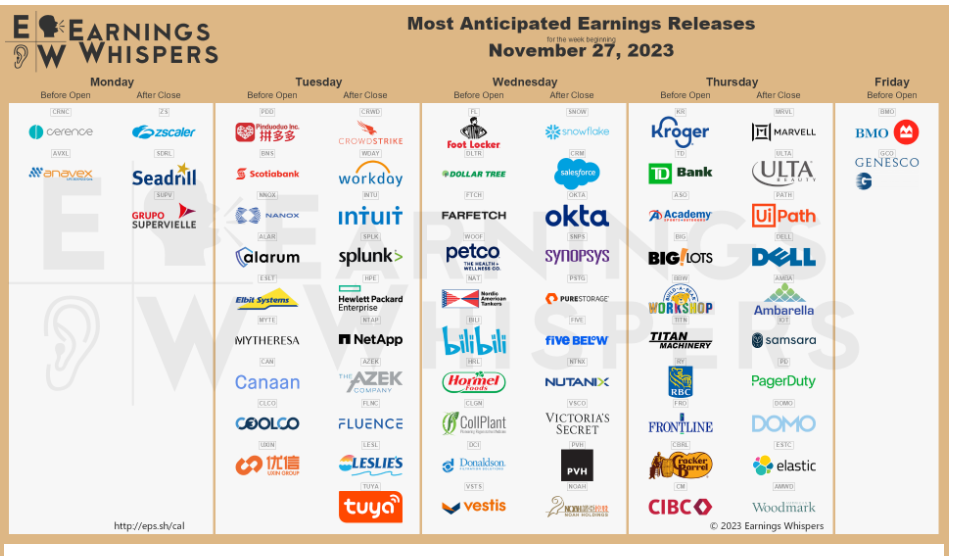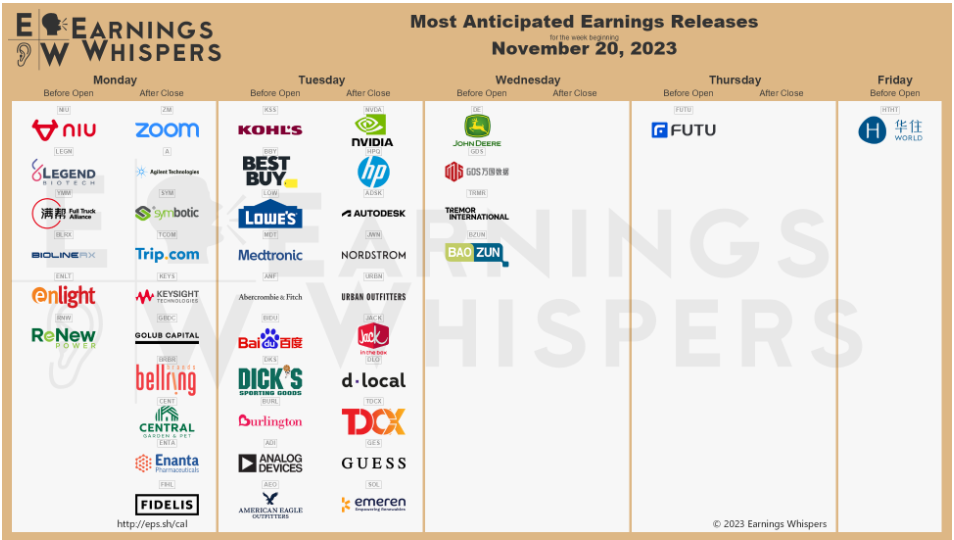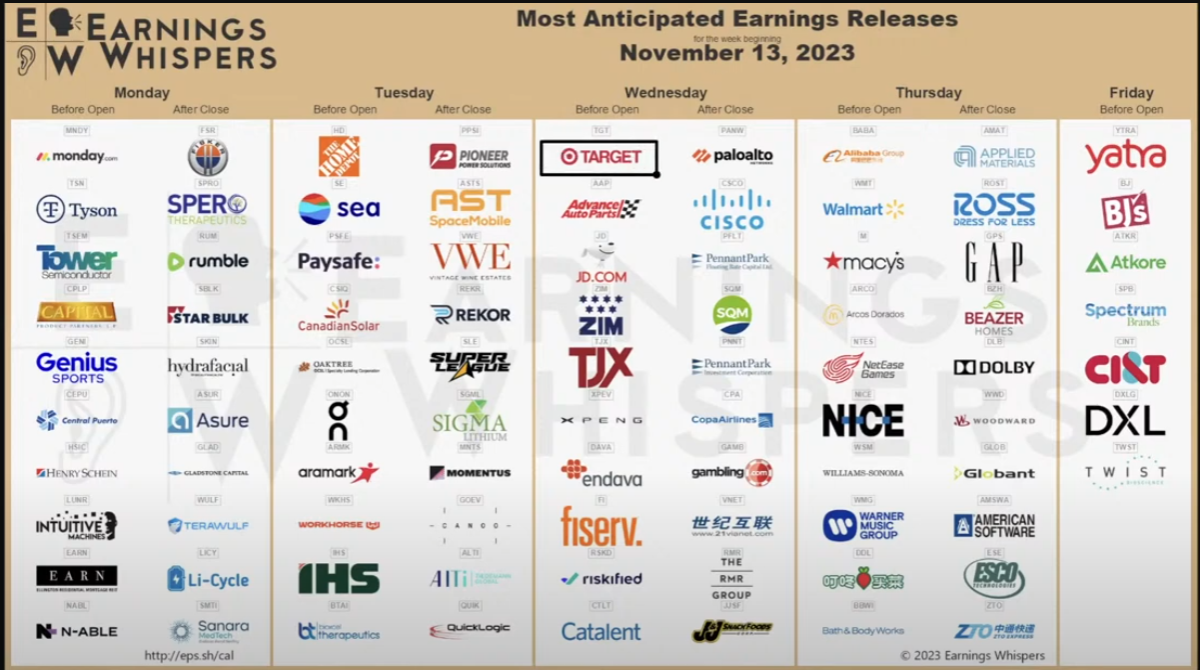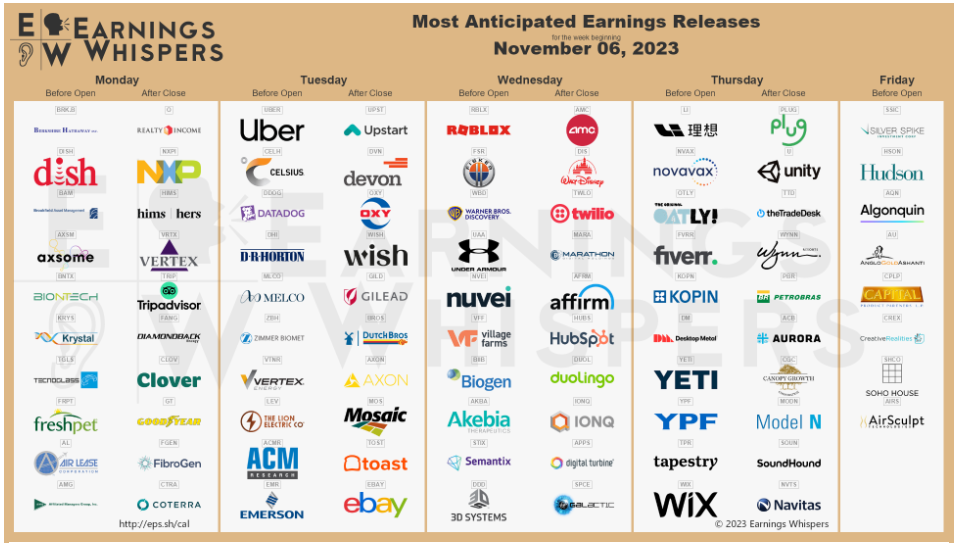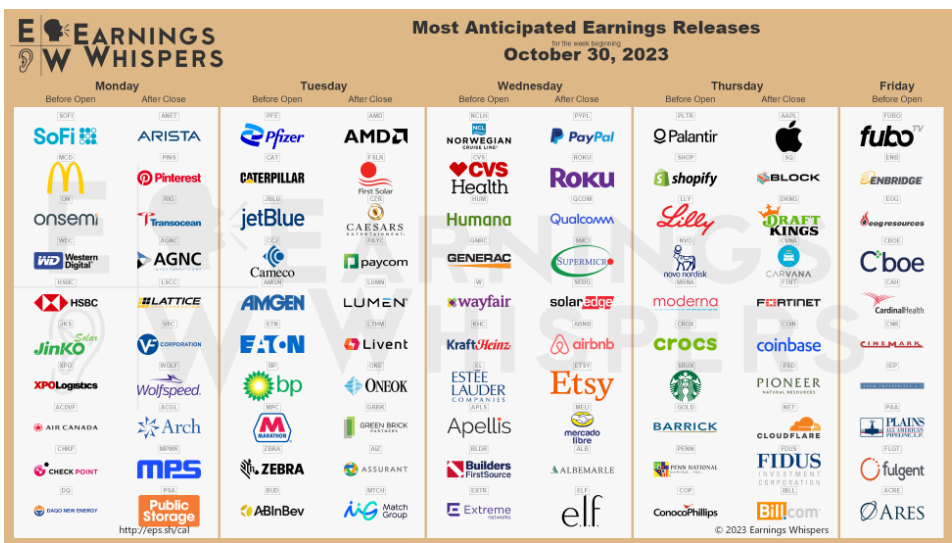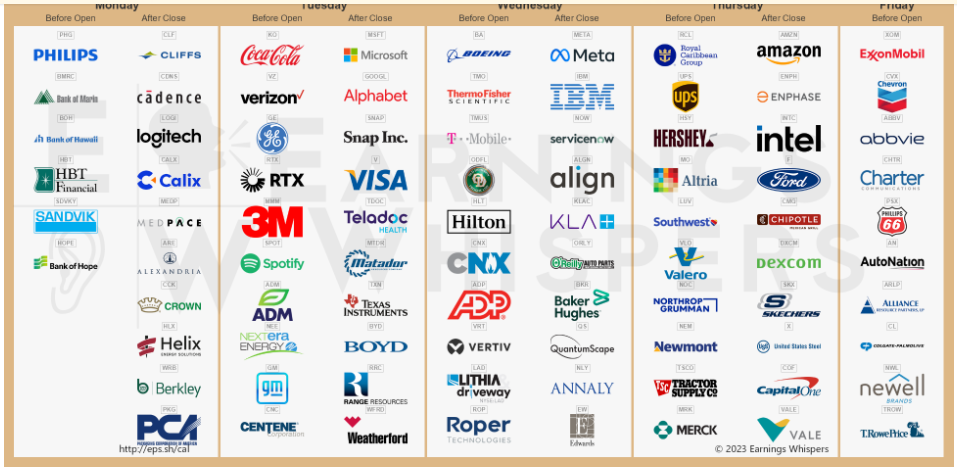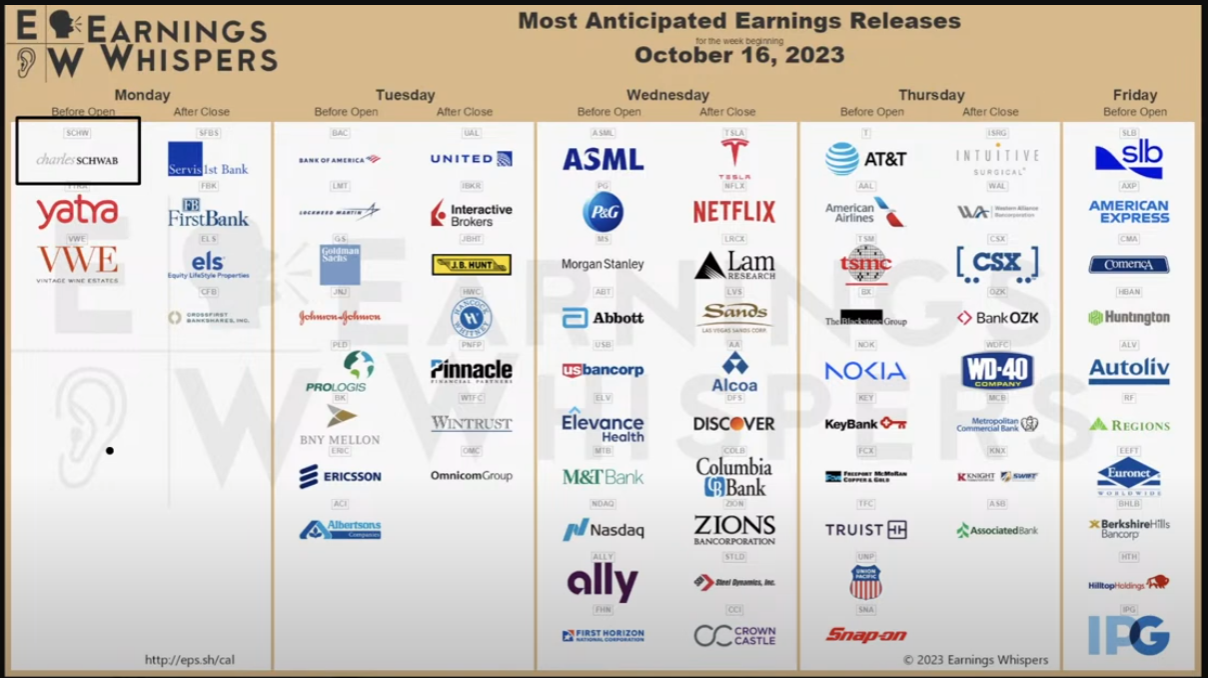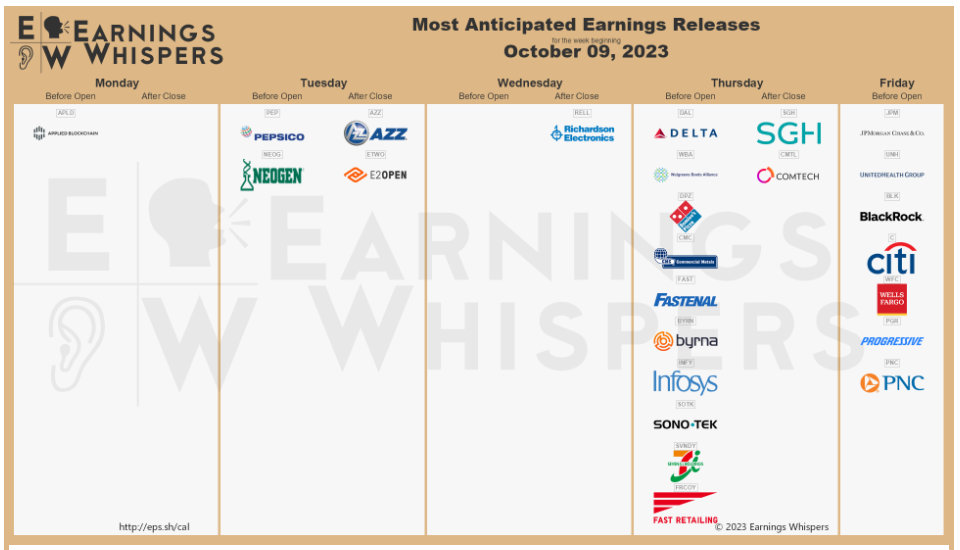Week of Nov 31, 2023 Weekly Recap & The Week Ahead
December 4th, 2023‘Avoid crazy at all costs’ –– Charles Munger
1. Fed’s Waller, Bowman Open Door to Another Interest Rate Pause in December — Two Federal Reserve officials who led the push for higher interest rates to curb inflation last year signaled they could be comfortable holding rates steady for now, reinforcing expectations that the central bank’s current hiking cycle is done. While the remarks don’t fundamentally change expectations for the Fed’s December meeting, Waller’s comments in particular suggest support is widening among officials for an extended policy pause amid signs that economic activity, inflation and the labor market are cooling.
2. U.S. GDP grew at a 5.2% rate in the third quarter, even stronger than first indicated — Gross domestic product, a measure of all goods and services produced during the three-month period, accelerated at a 5.2% annualized pace, the department’s second estimate showed. The acceleration topped the initial 4.9% reading and was better than the 5% forecast from economists polled by Dow Jones. Primarily, the upward revision came from increases in nonresidential fixed investment, which includes structures, equipment and intellectual property. The category showed a rise of 1.3%, which still marked a sharp downward shift from previous quarters.
Government spending also helped boost the Q3 estimate, rising 5.5% for the July-through-September period.
However, consumer spending saw a downward revision, now rising just 3.6%, compared with 4% in the initial estimate.
3. Fed’s favorite gauge shows inflation rose 0.2% in October and 3.5% from a year ago, as expected — the personal consumption expenditures price index, excluding food and energy prices, rose 0.2% for the month and 3.5% on a year-over-year basis, the Commerce Department reported. Both numbers aligned with the Dow Jones consensus.
Headline inflation was flat on the month and at a 3% rate for the 12-month period, the release also showed. Energy prices fell 2.6% on the month, helping keep overall inflation in check, even as food prices increased 0.2%.
Goods prices saw a 0.3% decrease while services rose 0.2%. On the services side, the biggest gainers were international travel, health care and food services and accommodations. In goods, gasoline led the gainers.
Personal income and spending both rose 0.2% on the month, also meeting estimates and indicating that consumers are keeping pace with inflation.
The week ahead — Economic data from Econoday.com:
